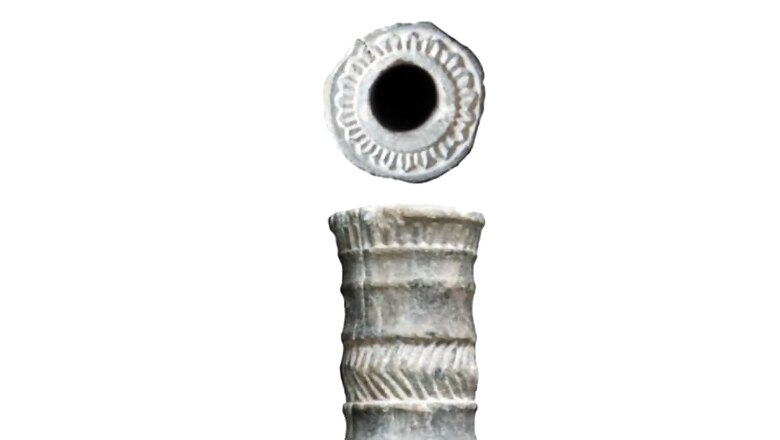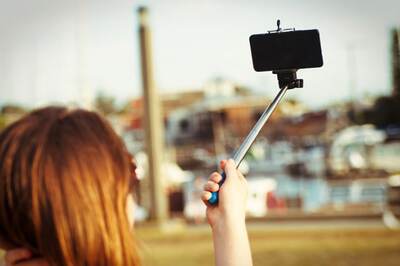
views
In Iran’s Jiroft region, archaeologists unearthed a small chlorite vial containing a dark crimson cosmetic substance resembling antique lipstick. Published in the journal Scientific Reports on February 1, the discovery marks the oldest known red lipstick from the Bronze Age, dating back to around 2000 to 1600 B.C., making it approximately 3600 to 4200 years old.
The carved tube was found in an ancient graveyard that resurfaced in 2001 after a nearby river flooded. The site had been plundered, with many artefacts sold off. Fortunately, several items were recovered and returned to a nearby museum by officials.
The vial’s slim design, reminiscent of modern lipstick tubes, indicates it may have been intended to be held alongside a copper or bronze mirror, as illustrated in an ancient Egyptian depiction. The lipstick’s exceptional features include delicate “fine incisions” on its greenish chlorite surface, setting it apart from other artefacts of its time. According to Massimo Vidale, co-author and archaeologist at the University of Padua, these distinct characteristics hint at a sophisticated branding and packaging approach for cosmetic items in ancient times, comparable to modern standards.
New research suggests the nearly 4,000-year-old cosmetic may be among the oldest discoveries of its kind. https://t.co/cGoomt6tW2— Smithsonian Magazine (@SmithsonianMag) February 25, 2024
The lipstick has traces of galena and anglesite in addition to minerals like hematite, which is darkened by manganite and braunite. These were mixed with plant waxes and other organic substances, closely resembling modern lipstick recipes. This similarity suggests the advanced nature of ancient Iranian makeup methods.
The study, which dates to the early 2nd millennium BCE, provides crucial information on the Marhasi ancient civilization. This civilization is mentioned in contemporaneous cuneiform texts from Mesopotamia. The Jiroft civilization, which is thought to represent the ancient polity of Marhasi, thrived in a valley abundant with diverse lithic resources. These favourable conditions likely contributed to the advancement of cosmetic practices in this region.
In an email to Bored Panda, Professor Vidale stated, “So far, for the world of 5000-4000 years ago, we knew about makeup recipes, eyeliners and eye shadows but not about lip paints.” This discovery is in line with the well-documented history of cosmetology in ancient Iran. This tradition involved the use of light-coloured compounds for foundation or eyeshadow and black kohl for eyeliners.
Dr Nasir Eskandari, a professor at the University of Tehran and a key contributor to the discovery, explained to IRNA that the study’s goal was to reveal the pioneering role of ancient Iranians in chemical science. He suggested that Iranians might have been the first inventors of lipstick. However, Professor Vidale advised against making definitive claims of “earliest evidence,” recognizing the ongoing potential for discoveries to reshape our comprehension of ancient cultures.




















Comments
0 comment